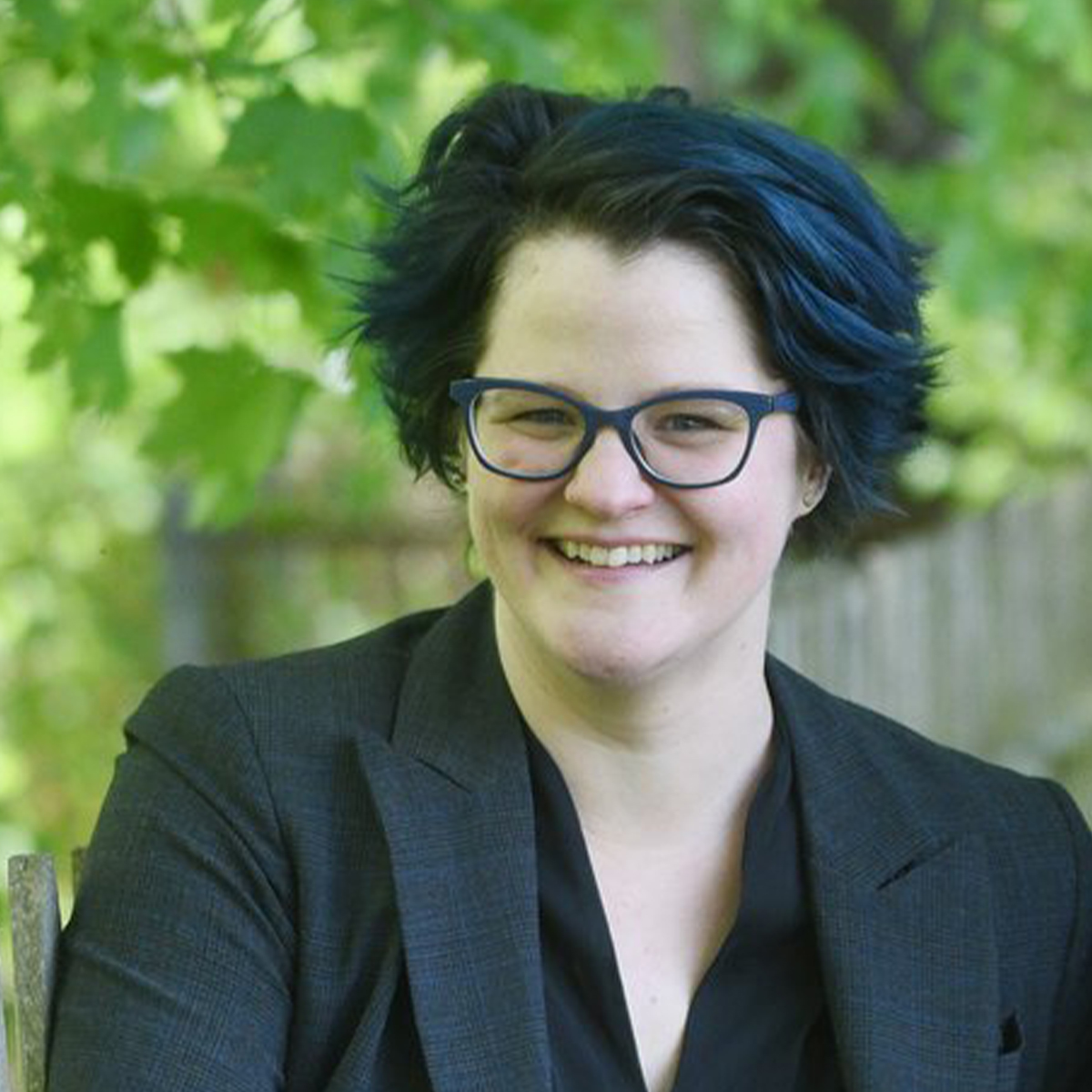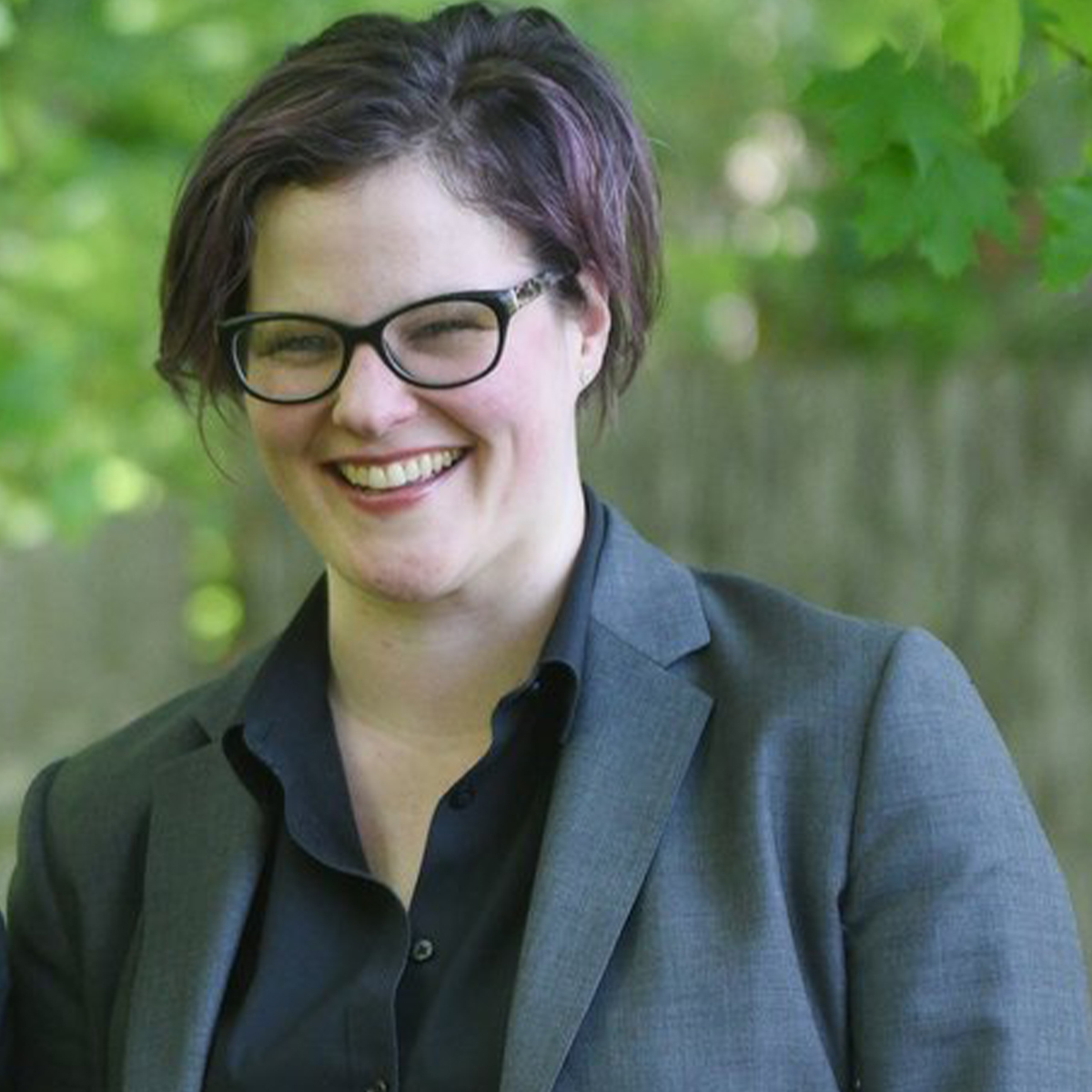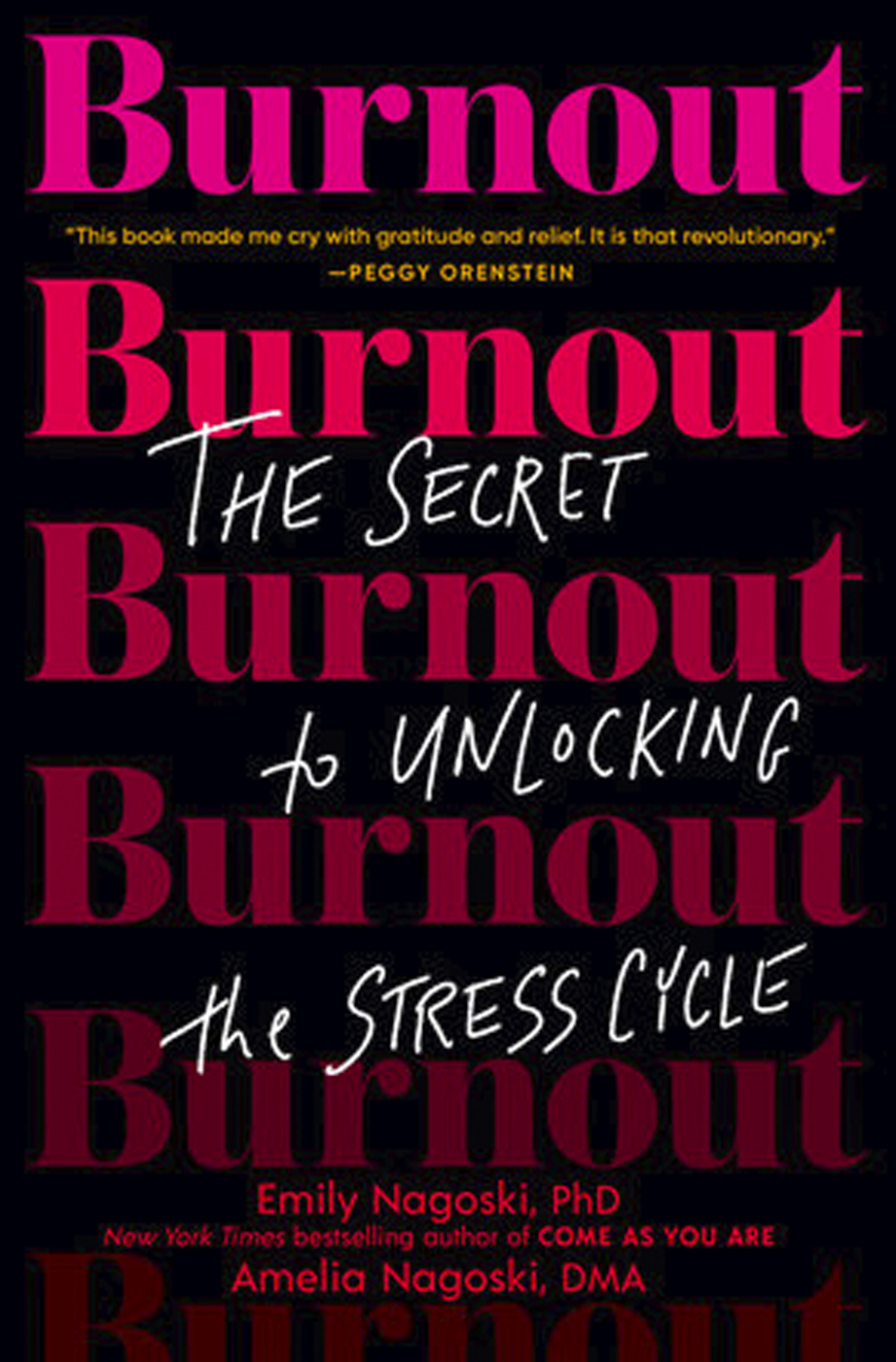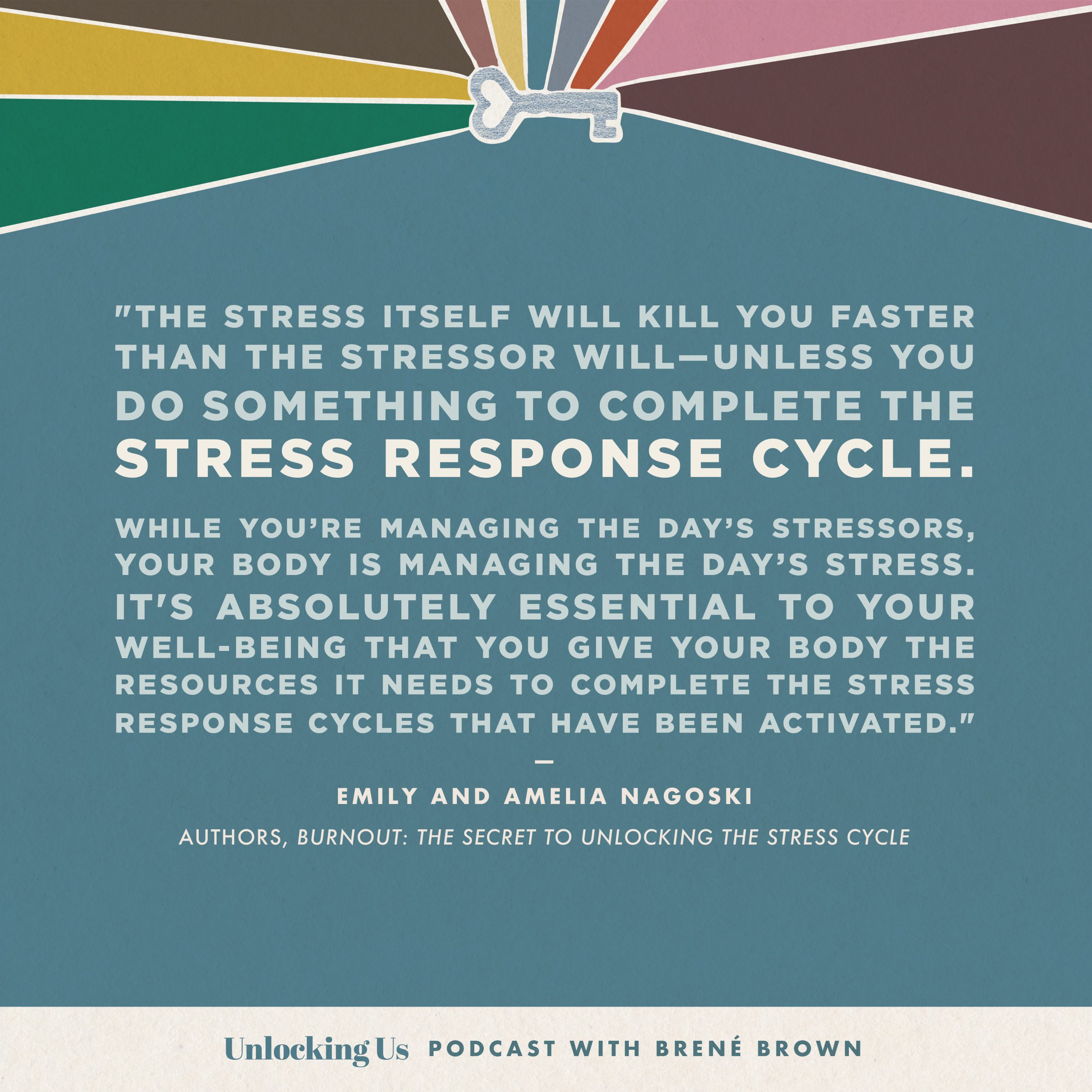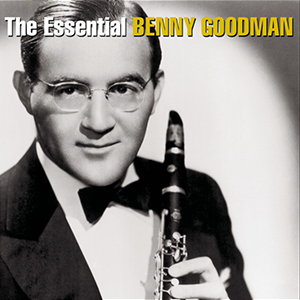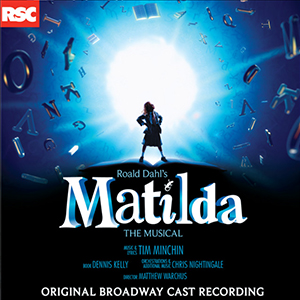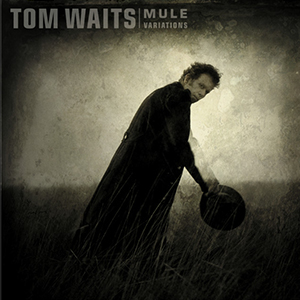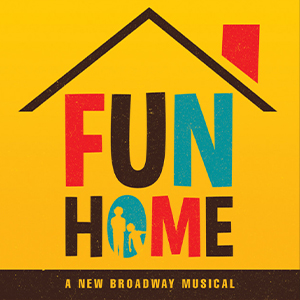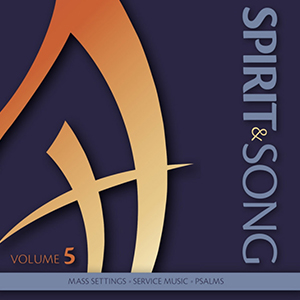Brenè Brown: Hi everyone, I’m Brené Brown, and this is Unlocking Us. In this episode, we’re talking to doctors Emily and Amelia Nagoski about their really powerful book, Burnout. And let me tell you something, burnout is, I know, I’m with you, it’s… All of us are in it, I think right now, and it’s no joke. We talk about what causes burnout, what it does to our bodies, and also how burnout, really an emotional exhaustion, comes down to the neurobiology of emotion. What happens to us when we get stuck in an emotion? Did you know that there’s a beginning, middle, and end? And one of the things that causes burnout and emotional exhaustion the most is when we get stuck in that tunnel? We don’t complete the whole cycle. This is just… This made so much sense to me. And I’m recording this intro probably… Barrett, what do you think? 10 days after? Two weeks after I’ve done the interview. I’ve put these strategies into practice in my life; it has made a difference. We’re going to talk about the seven easy ways to work through and complete the stress cycle. And again, I’ve been doing it and has made…
BB: Wow, it’s… I can’t believe I didn’t know this, and it’s so tactical and helpful. And burnout is my middle name, sometimes. So, this is a conversation that you will not want to miss. Okay, let me tell you about our guests before we get started. So, Emily Nagoski, Dr. Emily Nagoski is a sex educator and author of The New York Times bestseller, Come as You Are: The Surprising New Science That Will Transform Your Sex Life. Best title ever, PS. Her job is to teach people to live with confidence and joy in their bodies. Amelia Nagoski, DMA, which stands for Doctorate of Musical Arts, is an Associate Professor and Coordinator of Music at Western New England University. Her job, as she describes it, which I love, is to run around waving her arms and making funny noises and generally doing whatever it takes to help singers get in touch with their internal experience. In that way, her work is very much like Emily’s. Emily’s master’s degree is in counseling, Amelia’s is in choral conducting. One day, they realized they both got graduate degrees in basically how to listen and feel feelings, which, they say, may say something about their childhood. They both live in New England with a variety of cats and dogs and spouses.
BB: Yes, they are twins. Yes, they are identical twins. And yes, one time they did pretend to be each other, and it did not go well. And as the older sister of twins, I can tell you that plan only works on TV shows. Alright, let’s jump in. Burnout. Alright, let’s just jump right in. The name of the book is Burnout. It graphically repeats itself, so I like to call the book Burnout, Burnout, Burnout, Burnout, Burnout: The Secret to Unlocking the Stress Cycle. Here’s what I want to say to all my listeners. Do you know all the times where I’ve said things like, “Yeah, I was doing this interview and it was kind of weird because he turned it into a personal coaching session and I was like, ‘We should get more specific’?” Well, forget all that shit right now. I need this work. I’ve got a million questions for you. So, let me start with this question before we dig in to my multiply tagged and highlighted book. What led you to writing a book on burnout?
Emily Nagoski: Yeah, it’s a very specific story. I wrote a book about the science of women’s sexuality called Come As You Are: The Surprising New Science That Will Transform Your Sex Life. It was a sex book. But because the best predictor of women’s sexual well-being is, surprise, her overall well-being, there’s a chapter about stress and emotion processing. And in the six months after that book came out, I traveled across the country, and I would give all these talks about the science of women’s sexual pleasure, and I kept hearing from women after the talk, they’d come up to me and be like, “Yeah, all that sex stuff is great, Emily, thanks for that, but you know, the one chapter that changed everything for me was the one about stress and emotions.” And I was surprised. I had worked really hard on the sex science part of it. So, I brought this story to Amelia.
Amelia Nagoski: Yeah, and I was not surprised at all, because I was a conductor, and I had been to a conservatory. And in musical training, you are specifically trained in how to feel feelings and process them and express them on stage, so I know that it’s a learned skill. And I also know that when you learn that skill for stage, that doesn’t necessarily translate into knowing how to do it in your real life, and I had to. And Emily is the one who got me started on learning how to do that. So I reminded her of that and said, “Yes, of course people… That changes their lives; it changed mine. It actually saved my life twice.
EN: Which, insert the long story about Amelia being in grad school and hospitalized twice with undiagnosable pain, they ultimately removed her appendix. She was in a doctoral program that I’m just going to brag because I know she won’t, she is the only woman who has ever finished this program.
BB: Damn.
EN: That’s how misogynist the field of classical music is. And so imagine your identical twin crying in a hospital gown and you’re a professional health educator and you don’t know what’s wrong. So I started giving her books about stress management, [chuckle] because it’s what I had, what I had with peer-reviewed research here. And she started reading it and she called me on the phone crying, like “This book says that feelings exist in your body. Is that true?” How could you not know that? How?
AN: Literally, I’m a conductor and my job is to express emotions with my body. But look, if I had recognized that emotions are in my body all the time, oh, that’s a lot of emotion from my whole life that’s in my body, and if I had been… If I have been recognizing that, that might have led to some suffering. Turns out, what I learned is that you need to turn toward that difficult stuff, and that actually it feels hard in the moment, but it, in the big picture, alleviates suffering.
EN: So we have this experience with her in grad school and she said, “Yeah, remember that time that it saved my life and… Okay, so we should write a book about that.” And so that’s how we got started. That was in October of 2015.
BB: I absolutely… I’m almost speechless, and y’all have to know that that’s very rare for me, I study affect for a living. I have 400,000 pieces of data. And I’m understanding things about myself for the first time, reading your book.
EN: You don’t know what’s happening in my heart right now. So, here’s the way I write; I write a chunk, I print it out, I walk around my house reading it out loud to a specific audience. And sometimes I’m thinking of a specific student who I had this conversation with. Sometimes I’m thinking of Beyoncé. And there were days when I was like, “Would this really make sense to Brené Brown? Like if she read this book, would she feel seen and understood? Would she feel like she was gaining insight?”
BB: The answer would be, “Oh hell yes.” Like, “Yes.” And I’m working on new research on emotion right now and I just… The way you write about… I don’t know. It is a little bit of a love affair, I have to tell all of our community listening, because not only is this swirl of peer-reviewed research, amazing synthesis, music and pop culture TV references, it’s like all good things are right in here. Let’s start with Herbert Freudenberger. Okay, so Herbert Freudenberger in 1975 gave us a definition of burnout. Tell us about the three components.
AN: So the three components of burnout are emotional exhaustion, decreased sense of accomplishment and…
EN: Depersonalization.
AN: Depersonalization. I’m just going to lay this out here that I’m a COVID long hauler, and the brain fog is real. So sometimes I’m staring at things and I don’t remember what I was doing. Okay, so there’s…
EN: I’ll pick it up when you fall away.
AN: When those happen… And that’s why I have a sister to be the rest of my brain for me.
BB: Yes, sisters that pickup things. I’m so glad you’re on this side of it, and I’m so sad that it’s a long haul because I’ve got a couple of long hauler friends that it’s just people do not understand what’s involved.
AN: So those three things. Herbert Freudenberger with the decreased sense of accomplishment, emotional exhaustion and…
EN: Depersonalization.
BB: Okay, so emotional exhaustion, I think we… I love this definition that you put in here, which I guess is Freudenberger’s: the fatigue that comes from caring too much for too long. Depersonalization: the depletion of empathy, caring and compassion, and then decreased sense of accomplishment: the unconquerable sense of futility, feeling that nothing you do makes any difference.
AN: Yeah. And in particular for women, it’s the emotional exhaustion.
BB: Okay. So that’s the thing that killed me. So, burnout, super high across everyone. I would imagine now in the time of COVID that burnout is at an all… Do we have any data that’s telling us what’s going on with burnout right now?
EN: Not to my knowledge specifically. Most of the research on burnout, it began about professional burnout and it stayed about professional burnout for a really long time. The ICD-10’s definition is about professional burnout. It’s only in the last five years or so that work on parental burnout has begun, though you can imagine exactly how this shows up for parents and caregivers of all kinds. And we know for sure from journalistic reporting that’s been done that women are being laden with the lion’s share of the adapting that has to be done when people are working from home, when people lose work, when schooling has to happen at home, whose job is all that stuff? Even in the countries where it is the most fair, and that includes the United States, it’s still massively increasing women’s workload and not men’s.
BB: So we’ve got the unpaid second shift and the unpaid third and fourth shift now.
EN: Exactly.
AN: And COVID for sure, like a pandemic and all the other…
[vocalization]
AN: That’s going on in the world are chronic stressors, and there’s a lot of new writing about compassion fatigue, because people who aren’t sick are always worried about the people around them getting sick and yeah, it’s a perfect storm for burnout.
EN: And vicarious traumatization, I’m really worried about the caregivers and the medical providers who’ve been exposed to just emergency rooms and ICUs packed with people, and witnessing death on a scale that is just not something we’ve seen in the United States ever before.
BB: Yeah, I agree. So when I read people helping people, just high, high rates of burnout, and you write here, “In the 40 years since the original formulation, research has found that it’s the first element in burnout, emotional exhaustion, that’s most strongly linked to negative impacts on our health, on relationships, and work, especially for women.” So then you take us into a primer on emotion. I think it’d be helpful for folks here to… What is emotion?
AN: This is the part of the book that 20-year-old me needed to hear, because when I was 20-ish, I was not convinced 100% that emotions were like a real thing. I sort of had this image of emotions is like an airy-fairy somewhere out there feeling…
BB: Very gauzy and… Yes.
AN: Yeah. And I needed science in my mid-30s to prove to me that emotions were real, even though I was literally a professional musician and expressing emotion was my job. I guess the performance aspect of it made me able to separate myself. Okay, emotions are cycles that happen in your body. They are neurological events, and when I say neurological, I mean not just happening in your brain but your whole nervous system, the intelligence of your body extends to your nervous system from the top of your head to the tip of your toes and also beyond your skin. Emotions are an involuntary neurological response. They have a beginning, a middle and an end.
BB: I just found that so helpful.
EN: The metaphorical version is feelings are tunnels, you have to go all the way through them to get to the light at the end.
BB: I have that double-highlighted here. I have a couple of things. “Just about every system in your body responds to the chemical and electrical cascade activated by emotion. Emotion is automatic, instantaneous, it happens everywhere and it affects everything.” It’s so funny to me in my work, how much time I spend trying to help people understand, people really want to believe, and myself included, and I think my 20-year-old would have liked your 20-year-old, that we are cognitive rational beings who on occasion feel, when the truth is, and we know this now from PET imaging for the last decade, we are emotional beings who on occasion think. So, I’m going to quote this from the book. I just want everyone to take a deep breath, like everyone… Lots of walkers and runners listen to the podcast and a lot of people driving. So, pull over, you might have a moment here, or just step up on a curb. “In short, emotions are tunnels. If you go all the way through them, you get to the light at the end. Exhaustion happens when we get stuck in an emotion.” What the hey-ho?
AN: I know, right?
BB: Okay, I’ve got to keep… Can I keep reading here for just a second? Can I read y’all to you? “We may get stuck simply because we’re constantly being exposed to situations that activate emotion: our crush is here, and all day every day, if only in our thoughts, and so we’re trapped in our own longing for our crush. Or we return to a stressful job every single day, which is no wonder the helping professions are so exhausting, you’re connected with people in need all day, day after day. Sometimes we get stuck because we can’t find our way through. The most difficult feelings, rage, grief, despair, helplessness,” I would probably maybe add shame to that, “may be too treacherous to move through alone, we get lost,” I love this, “and need someone else, a loving presence to help us find our way through. Many of us are trapped in this way because of a problem we call Human Giver Syndrome.” So, I want to go back to this, “Exhaustion happens when we get stuck in an emotion.” Oh my God.
EN: Emotions have a beginning, a middle, and an end. A lot of us are taught to believe that if we fix the problem that caused the stress or the emotion, then we will have dealt with the emotion itself. It turns out, no, there is a disconnect in the world we live in now between the behaviors that deal with the things in our lives, like the crush across the room. There are things we can do to deal with that, and almost none of those things, like when you bravely go up and you’re like, “Hi, here’s my name. How are you?” And then you leave the room, and do you suddenly feel like peaceful, relaxed, “I dealt with the situation, I feel like I took a step forward”? No, you have to go scream in silence in the bathroom and call your friends because you still have to deal with the feeling, which is a separate step from dealing with the issue that was activating the emotion in your body. Most of us are taught to believe other people’s opinions about our bodies more than we believe what our bodies themselves are trying to say to us. And so we believe when we are told that, “Well, I mean, you dealt with the issue, so you should be done feeling by now.”
EN: “So why do you still have all these feelings? We don’t want to hear about your feelings anymore. Your feeling should be done because the situation is done, so let it go, we are so tired of hearing about you and your feelings.” And you’re like, “I must behave myself emotionally so that I do not interfere with anyone else’s well-being, and so I am now officially done with my feelings.” And you smile and you shove it down into some organ system, I don’t know which one, and then it lives inside you.
BB: And it metastasizes, right?
EN: Oh yeah.
AN: It’s not necessarily the worst choice you can make in that moment. In some moments, smiling and being polite and walking away and containing and shoving it all down and hiding it can make you safer. You don’t want to confront every douchebag on the side of the road who yells, “Hey baby, nice tits.” That would not be safe. So you squash it down and you hide it, and then you get home and you’re like, “I’m such a strong badass, I just ignored that guy.” No. I mean, yes, but now finish that feeling, go back and revisit it and go through the whole cycle.
EN: Complete… Get the rest of the way through the tunnel.
BB: Get through the tunnel, okay. Okay, before we start talking about this piece around separating stressors and stress, let’s talk about what Human Giver Syndrome is. Damn this syndrome.
AN: Human Giver Syndrome… Yeah, absolutely. It’s a phrase we adapted from a book by a moral philosopher named Kate Manne. The book is called Down Girl: The Logic of Misogyny, and it’s an intense dark read of moral philosophy, but it’s short and readable. I highly recommend it, it’s fantastic. But she does lay out in that book a moral system where a world contains two kinds of beings: human beings whose job it is to live, to express, to be their humanity, and they have a moral obligation to acquire whatever resources it takes in order to accomplish their moral obligation. And on the other hand, the human givers whose moral obligation it is to give their humanity, their time, their lives, their bodies, their feelings to the human beings. Guess which one the women are. This is a cartoon version.
BB: Yeah, I’m like, “No, ma’am. No, ma’am.” Yes, this is terrible.
AN: Emily and I are both married to men who are givers. They turn towards our needs with kindness and compassion, they do not feel entitled. So absolutely there are men in the world who do not feel this way. In the large scale though, a lot of us have Human Giver Syndrome, men and women alike, where we honestly do believe that it is the moral obligation of women to be at all times pretty, happy, calm, generous, and attentive to the needs of others. And if we at any time fail in our moral obligation to be pretty, happy, calm, generous, attentive to the needs of others, then we deserve to be punished. And if there’s no one around to punish us, we will just go ahead and punish ourselves.
EN: And that includes if you’re married like we are, to fellow givers who are not going to punish us for falling short of it. But as people with Human Giver Syndrome, if our partners won’t beat us up, we’ll just go ahead and start whipping ourselves for the ways that we fell short of being able to save humanity and everyone in the world.
BB: Yeah, so this is part of, I’m thinking about this in kind of gender non-conforming terms. I think this idea, when I was reading it, the Human Giver Syndrome, anyone who finds themselves wanting to be aligned with feminine cultural norms, this is a part of that syndrome. It goes back to the research that I found probably, I don’t know, maybe six or seven years ago, where it still said cultural norms for femininity in the US are still nice, quiet, and spending all resources on appearance. It’s really just, “stay quiet and small and just take care of other people” basically.
EN: Yeah. And Kate Manne is clear that this is an intersectional issue, so for people of color, they’re expected to be human givers to anyone who is white. And one of the grotesque ways that this plays out is that white women, feeling so trapped by human giver syndrome take on the role of human being and feeling entitled to take anything they want to from people of color, from people with disabilities, from immigrants, from poor people. In her new book, Entitled, Kate Manne uses the language of leaning down instead of leaning in. White affluent women lean down on immigrant and Brown and Black women in America. So one of the most important things we can do is recognize it for what it is and heal the damage that it is doing to us so that we don’t take that damage out on anybody else.
BB: So we don’t lean down.
EN: Right.
BB: Okay. So, what we understand so far…
EN: We’re still in the introduction, by the way.
BB: Yeah, no, we’re still on the introduction, but I just want to… I want to lay this out because the way the book is laid out, I have to say as a writer, is really smart, and it really walks people through this. So, we know that emotions are real, they’re science, they’re neurobiology, they’re in our body, they affect everything we do all the time. We know that they have a beginning, middle, and end. And we know that we have to move all the way through them in order to… What happens when we get stuck in the middle of the emotion tunnel? What is the outcome of that?
EN: You end up in the hospital like Amelia. And the reason that happened, so if we take stress as the exemplar emotion, you think about all the things that… Let’s take just the example of the cardiovascular system which we do in chapter 1, your blood vessels are designed to tolerate like a steady sort of pulsing stream of blood flow. And when your adrenal level goes up your blood pressure goes up and it’s like a fire hose spraying in your blood vessels. And your system is competent at dealing with that when it lasts as long as it’s supposed to in the environment where we evolved, which means it’s going to last maybe 10 minutes and then be over.
EN: But we stay in this state of chronically elevated stress for hours, days, weeks, months, years at a time, and this causes wear and tear on our blood vessels, which causes weak places for plaques to develop, and this is how stress causes heart disease, and that’s just one of the systems. Take your endocrine system as another one, your digestive system. Your digestive system is one of my favorites because it is so common for stress to show up in people’s digestive systems. Complicated, fascinating things happen where your upper digestive system slows down, but your lower digestive system tract speeds up, and then you get IBS.
BB: God. It just totally makes sense. Okay. So let’s start with the chapter on Complete the Cycle. I just need everyone to get it and read it. Well, it really is… I’m not like a journalist where I just, any book that comes out I have to talk to the people. I’m a podcaster, I just get to talk about books that make a difference, and so this is one of them. Tell me, define, and differentiate stress and stressors for me.
EN: So your stressors are the things that activate the stress response, they are… Most of them are external, so this is like work, kids, money, white/cis/hetero patriarchal, rapidly exploitative, like capitalism, small things that activate the stress response. Some of them are internal things like body self-criticism and trauma history, and they activate the stress response. The stress itself is what happens in your body, it’s this chemical stew that gets activated in response to it, and it’s designed to help us evolutionarily survive the stress like being chased by a lion or charged by a hippo. Amelia’s favorite animal is hippo so I always make sure to say that hippos are the most dangerous land mammals on earth except for humans, so you could be trampled by a hippo. And when you’re being chased by a hippo, what do you do?
BB: I run.
EN: Yeah, you totally run. Absolutely. And imagine you managed to run away from the hippo because hippos actually don’t have a lot of stamina, so you run all the way, and somebody waves you into through their door and you close it and you shut it and the hippo gives up, and it’s like, “Never mind,” and just runs away. And you look at this person who just saved your life and you feel this rush or just exhaustion but this joy to be alive, and it seems like the sun is shining brighter and you love your friends and family, and you’re so grateful to be alive. It’s easy to think that it is the hippo going away that made that happen, but it’s not, it’s the running and the connection. Your body only knows what those behaviors are. Those behaviors are what say to your body, “You have escaped from this stressful situation and your body is now a safe place for you to be.” It is the behavior, it’s not the change in your environment that triggers the physiological change.
BB: So here’s where I think we need to go into slow motion, and walk people through this. Removing the stressors does not mean the stress cycle is complete.
AN: Yeah. It means two things. It means that you don’t have to wait for all the stressors to go away before you can start to feel better, but it also means that when the stressors do go away, it means you have to deal with the stress itself separately. I want to tell a story about when we were… When the book was first released in the United Kingdom and Ireland, we talked with a journalist in Ireland who had been part of the movement to legalize abortion in Ireland. And it had just recently passed, and she was telling us that she read this part of the book and she thought, this explains a lot because they had invested so much in their activism and going door-to-door and working so hard. And the good thing happened, the stressor went away, they were all done and they thought they would feel amazing, but no, they all collapsed, they all got sick, they all felt terrible. Even though this terrific news had happened, they felt bad, and it was because all the stress of that work, even though the stressor was gone, they hadn’t dealt with the stress in their bodies.
BB: So this is so interesting, because I mentor a lot of women, MSW students, Master’s in Social Work students who are getting PhDs. And so, I always warn the doctoral students that when you turn your dissertation in, and you’re really done with your re-writes and everything, you’re going to hit a wall and it’s going to be painful, and they’re like, “No, I’m not hitting a wall, I’m going to the Caymans.” And you know what? They all get sick. And so, okay I want to read this, geez, in the book we’re on page seven you all. “You have to do something that signals to your body that you are safe, or else you’ll stay in that state with neuro chemicals and hormones degrading, but never shifting into relaxation. Your digestive system, immune system, cardiovascular system, musculoskeletal system and reproductive system never get the signal that they’re safe.”
AN: Because your body speaks body language, your body doesn’t know that filing your taxes mean that you’ve accomplished something, your body doesn’t know that a change of legislation means that you now have autonomy over your body’s choices. You need to speak body language and fulfill the thing that it’s intended to fulfill.
BB: People do not get that we cannot separate the body from affect emotion, it’s why we call it feelings, right?
EN: Right. Exactly, exactly. And it’s actually with the… Especially when it comes to illness and stress there’s an extra layer of complexity. Your central nervous system only has a limited amount of bandwidth. If you’re super stressed, there’s a lot of noise in the highway of your brain and spine, and your immune system communicates with you through your nervous system via symptoms. So, if your symptoms are like, “Hey, you have a headache, hey, you’re exhausted,” your brain is like, “What? I can’t hear you over the noise of all this exhaustion and stress. Are you trying to tell me something? What? Let me finish this project and then I’ll listen to you.” So you’re sick all along, you hand in your dissertation, you’re walking home, this is not a personal story at all, you’re walking home from having turned in your dissertation, and you’re like, “Oh, I’m really feeling not well,” and you get, you have a fever by the time you get home and congestion headache by the time you lay down, and then you spend the next two days in bed, but you were… It’s not because you all of a sudden got sick, you were sick all along, but now your immune system can finally get its voice heard over the noise of all the stress.
BB: “The stress itself will kill you faster than the stressor will, unless you do something to complete the stress response cycle. While you’re managing the day’s stressor, your body is managing the day’s stress, and it’s also absolutely essential to your well-being, the way sleeping and eating are essential, that you give your body the resources it needs to complete the stress response cycle that has been activated.” Okay. So, why we get stuck? Number one, tell me about chronic stressor, chronic stress.
EN: This is the straightforward, like you’re working on a big work project and you work on it really hard and you know you’ve got to complete the stress response cycle that was activated by this big project at the end of the day, so you get home and you do whatever the thing is. Do you have a thing that you know completes your stress response cycle, like when you do it, you’re going to feel better, Brené?
BB: Yes, walking.
EN: Yeah, so you do your walk and you’re like, “Oh, I feel so much better,” and you hang out with your family and you eat something great, and then you get a good night’s sleep and you wake up in the morning, and there’s the big project for you to work on again. And so, you have to do the same thing to drain off the stress again. And if your stress level outpaces the resources you have available to drain off the stress, it will keep accumulating.
BB: I’m just going take a deep breath here. Okay, number two, the second reason we get stuck: social appropriateness.
AN: Yeah, yeah. The expectations, in particular for women, are that we never show anger, never express any intense emotions at all. Remember, we have to be pretty, happy, and yet calm, generous, and attentive to the needs of others. So in order to be safe in the world, in order to meet people’s expectations, in order to not get fired from our jobs, we have to smile and be nice to the asshole. And the smart, safe thing to do in those moments is to bury that shit down and save it for when you get home.
BB: And then take it out on your husband, is that…
AN: Hopefully not, hopefully you go for a walk and eat something delicious and hug your family and, yes, but that is what would happen unless you deal with it separately.
BB: So number three is kind of tied to number two in some ways, so social appropriate. So the reasons we get stuck, one, chronic stress, two, social appropriateness, and three, safety. And this is the guy that’s yelling, yelling at you from the street, and you just can’t turn and confront that.
AN: “Hey, baby, why don’t you smile?” And you want to punch that guy in the face, but would punching him in the face actually make you safer? Probably not, it’ll probably escalate the situation. So the safe choice is to hang on to that for a minute ‘til you get someplace safe and then deal with the stressor. Deal with the stress on its own separately.
BB: Okay. I want you to… And I realize I’m acknowledging going into this, we’re going to get through the first three chapters of this book, but I think this is enough to change your life and then you can get the book. I want you to walk us through fight, flight, and then parasympathetically freeze. Can you tell us about that and how that relates to all of this?
EN: So, fight and flight are the things we’re used to hearing about when we were in high school, we learned from Mr. Twilley, our science teacher, about the fight or flight response, which is the sympathetic “go” action. In less than a second your brain assesses a potential threat as something that you’re most likely to survive by running away, in which case you get the flight emotions. So this is everything from worry, to anxiety, to fear, to terror, all the different fears, depending on the intensity of what’s happening. And these are the avoid responses. So, it motivates you to be active and running away. And then sometimes in that split-second assessment it’ll think, “This is a threat you can survive best by fighting.” And this is an approach motivation, that’s like everything from irritation and annoyance up through frustration and anger, and ultimately rage that pushes you to move toward the threat so that you can destroy it.
EN: And these are both, so they’re action-oriented, either move away or move toward in order to deal with the stressor. And then under life threats circumstances, so your brain assesses the threat and it’s like, “Nope, you are too slow to run, you are too weak to fight. Your best chance of survival here is to slam on the brakes in the middle of all this and play dead.” So when you see this in the wild, the gazelle is running away from the lion, the lion’s teeth chomp into the hip of the gazelle. And what does the gazelle do? It can’t keep running, the lion has its teeth in her, so she flops to the ground. The lion feels all smug and wanders away to go get her cubs to feed on the gazelle, and this is when the glorious thing happens, so the gas pedal, the sympathetic nervous system has been pressed down hard and right in the middle of that big gas pedal stress response, bam, the brake slams on, everything shuts down.
EN: When the threat goes away, that brake begins gently to come off, and when you’re watching the gazelle lying there, it will start to shudder, and its paws will shake in the air, its hooves will shake. And what’s happening is, all the motor patterns that were activated but got interrupted as the brake comes off, they’re completing their cycle, they’re moving through what was already activated in the central nervous system, and it’s just finishing out what was already there, so it purges. And then the gazelle stands up and it shakes itself off and goes, and it trots away, that’s when the threat goes away and the brake can unlock, and the animal moves through the rest of it. And this happens for humans often in the case of trauma. One of the best examples of it, there’s a brilliant book called, In An Unspoken Voice by Peter Levine, who is the originator of somatic experiencing.
BB: Yeah.
EN: He tells the story of being hit by a car, he’s a pedestrian on the road, he’s hit by a car, and he very vividly recounts the experience of feeling the parasympathetic brake. Sympathetic means with emotion, parasympathetic means beyond emotion. So everything shuts down, this is a life threat situation, he lies there, and as he’s in the ambulance, he notices that he can feel the brake unlocking because he does this for a living, and he lets his shoulders shrug up and he lets his hands push flat out, and these are these small movements of allowing his body to release the thing that it needs to do. A lot of people who have surgery, when they come out from under anesthesia, which is medically induced freeze, will shiver and shake and they feel like they’re cold, and they might be cold, but a lot of it is that shivering is part of their brake releasing and allowing them to shift back up into a healthy state.
AN: All of that is fine and good, and it works in gazelles and it works in human beings too, but there is a barrier that gets in our way. We all know about fight and flight. Most of us even know about freeze.
EN: Anybody who reads the book does, yes.
AN: Yeah. But the problem is that there’s a kind of a hierarchy, a social ranking system, where we think that fight is better, and if you can’t fight, well, at least you could flee, and if you freeze that means that you’re weak and you fail. They’re all morally neutral, they’re all things that happen because your nervous system, in its wisdom, made a decision. And it’s not that when you freeze, you’re weak or you failed. When you freeze your body saved you, freeze is just as heroic as fight or flight. And the shame that’s associated with flight and especially freeze is a thing that stops people from recovering from trauma because they don’t allow themselves to feel a thing because they’re ashamed.
BB: It’s really interesting. I think that’s true because shame often hijacks that same system, and the shame often can move us into flight, fight or freeze. And then people will always say, “Yeah, I’d rather respond to shame with shame, I’d rather respond to aggression with aggression, I’d rather walk away, but when I do that whole like bunny in the headlight thing, and I can’t think of anything to say until later because my brain shuts down, that’s just weak.” So there is that hierarchical sense of the tough folks fight, then they run, but only the weak people freeze. It’s the deer in the headlight kind of thing, when… This is, our body knows best what to do in these circumstances, it’s just… It’s hard. And then can you get stuck in that?
EN: It’s always better to respond as if we’re a predator. If we do something that a prey animal would do, then that’s not ok, no. This by the way is how we wrote the book, is I would be like, “Here’s the thing that happens in your body,” and Amelia would be like… “And then there’s all these cultural barriers to us actually using this information, so let’s make sure we talk about the barriers so that people can get around them.”
AN: Which goes back to that original question, which is, Emily was like, “How do you not know this?” And I’m like, “Nobody knows this.” And there’s really good reasons society is telling us that this information is forbidden and that we’re not allowed to look at it and that if we do, then we’re unveiling something dangerous, which is that we’re human beings. And what we tried to do in the book and the thing that I learned most from writing the book is, the real answer is turning toward the difficult feelings with kindness and compassion. So whether you fight or flee or freeze, and if you have feelings about which one your nervous system chose to do, that’s all fine. Turn toward that with kindness and compassion and let yourself finish the feelings and complete the cycle.
BB: So let’s talk about that. And I love that, I love that… As a social worker, that’s my training. So it’s psychological, it’s sociological, it’s cultural, it’s biological, it’s systems of oppression. So to me, the context around everything you do is what makes the book so good. Let’s talk about the most efficient ways to complete our cycles.
EN: Most efficient – physical activity.
BB: What kind of physical activity?
EN: Literally any movement of your body. For me, it’s walking these days. When I was younger, it was running and long-distance cycling. It has also been rock climbing, I am a natural athlete, I absolutely have had the runner’s high experience. Even on the days when I don’t feel like it, I look at my shoes, I just don’t want to. I know that if I just put on my shoes and I go, by the time I get back, I’m going to feel so much better. Amelia thought I was making it up when I said that. She’s never had that experience. So it can be any form of physical activity. It can be dancing it out in your living room. It can be just standing up from your desk, tensing every muscle really hard, every muscle in your body until they’re shaking and begging for you to stop and then you go…
[vocalization]
EN: And you flop down, put your hands on the ground and let your body soak and release. And that, even by itself, is going to begin to release the physical chemical stuff that was happening in your body with the stress. Any movement of your body.
BB: Alright, so number one is physical activity. Number two, breathing. Let’s talk about breathing.
AN: Breathing down-regulates your nervous system, especially when you can take a slow breath in and especially a slow, long breath out. All the way to the ends of your abdominal muscles contract. That’s how you know you’re engaging the parasympathetic nervous system to down regulate the central nervous system. It is the gentlest way in to completing the stress response cycle, so if you’re a person who has survived trauma, neglect, abuse, you have a significant history of adverse childhood experiences, a great place to start so that you don’t get overwhelmed, is just with tuning into your breath, like a minute and a half worth of like breathing in and letting your breath go out.
AN: And your thoughts are going to go all over the place while you are doing this. That is normal. That is the point. You notice that your thoughts went all over the place, and you return your attention to the breath coming into your body and the breath leaving your body. When you don’t have time to do anything else, it can also just siphon off the very worst of it, so that you’re well enough to continue through the situation.
EN: Yes, if all you do is breathe and you don’t attend to your thoughts, you don’t do the mindfulness aspect, if you just physically breathe, that is highly evidence-based strategy for completing the stress response cycle, for down-regulating the nervous system. It doesn’t have to be any work at all, it doesn’t have to be any effort, you just breathe.
BB: I just… It’s so hard because not only am I a super stressed out person, I’m a breath holder.
EN: Yeah, you are not alone.
BB: Yeah. So this is really helpful. We really underestimate the power of breath, don’t we?
EN: Yes, yes, yes. Even when I first started learning the stuff, like everything, I underestimated how powerful it was, it sounded too easy, it sounded like it was kind of just like a hippie, made up thing.
BB: Totally.
EN: No. It’s absolutely, it’s how your biology works, it’s how your body functions.
BB: It’s just so funny too, because I write about breath in one of the most recent books, because I was really studying it around how to regulate and identify emotion. And the people who teach it the most, there’s just two camps that I learned, yoga instructors do a lot of breath work, and special forces military.
AN: Really?
BB: Yes, it’s probably I’m sure about completing the stress cycle, but it’s also about being able to focus and recognize fear and emotion, so really interesting to me. Okay, so we got physical activity, breathing. Number three, positive social interaction, how do we complete the stress cycle there?
EN: The part of the story where the hippo is chasing you and somebody lets you into their place and the hippo gets held back because somebody welcomed you in and the first thing you do when you feel safe is you jump up and down and hug each other and high five and fist bump, that natural inclination to connect with other people tells your body that it is somewhere safe. Even if you are not physically in a place that is your actual home, your body can get the feeling of home because it’s with someone who is your home. And that can be lightweight, it can be a positive social interaction with your barista. “Hey, I like your earrings.” You know, just that much, tells your body the world is a safe place.
BB: Okay, I love the next one. Laughter.
AN: Yeah, the caveat with this is it can’t be… Most laughter is social, posed laughter, it serves a function of lubricating conversations and making everybody… It can’t be that fake laughter. It has to be the slightly embarrassing, mouth hanging open, belly jiggling, uncontrolled, ridiculous laughter that really takes over your body, you can’t stop laughing. That laughter will take you all the way through the end of a stress cycle.
BB: Oh my God, I just think that is so good.
EN: It can even help just to reminisce with someone about a time that you laughed that way.
BB: I just know this is true. I love this, you quote Sophie Scott, who’s a neuroscientist here, that “laughter is an ancient evolutionary system that mammals have evolved to make and maintain social bonds and regulate emotions.” You know, it’s true, it comes up in my shame work a lot too, because shame is a universal affect or experience, and laughter is a universal language. And so it’s really weird, even my therapist friends who run very difficult groups like sexual assault survivor groups or incest survivor groups, always tell me they can measure the progress of the group by the amount of laughter, and it’s not a kind that’s like posing or the social lubricant, it’s also not that uncomfortable pained like laughter as self-deprecation or deflection, it’s knowing laughter. It’s almost sometimes laughing at the absurdity that we think we’re the only ones. It’s just… Laughter is just important. Okay, next, I love this, I love this, and I love what you write about it. You write affection is the next one. “A warm hug in a safe and trusting context can do as much to help your body feel like it has escaped a threat as jogging a couple of miles and it’s less sweaty.”
EN: Yeah, the 20-second hug, which is… There’s a lot of different research disciplines that this comes from. I heard about it from Suzanne Iasenza who’s a sex therapist in New York City. She calls it hugging until relaxed, where you hold your body against someone else’s and you’re not leaning into each other sort of one person step back, the other person will fall down, you’re both holding your own center of gravity, you wrap your arms around each other and you stay there, breathing together until you feel the shift in your chemistry. And that’s your body going, “I have come home to a place of safety, and I know that because my body feels safe with this other person pressed against it.”
BB: God. Let me just read this, “the research suggests a 20-second hug can change your hormones, lower your blood pressure and heart rate and improve mood, all of which are reflected in the post-hug increase in the social bonding hormone, Oxytocin.”
EN: And it’s not about the 20 seconds.
BB: It’s not about the time, it’s about leaning in, maintaining your own center of gravity, and just the vulnerability and intimacy of that.
EN: It’s a potentially awkwardly long time to hug somebody.
BB: It really is, but I like it. I like it.
EN: Of all the tips we give, it’s the one people are most likely to say that they incorporate into their life.
BB: Yeah, I believe that. Okay, the last two, a big old cry. “Anyone who says crying doesn’t solve anything doesn’t know the difference between dealing with the stress and dealing with the situation that causes the stress.” Say more.
AN: Yeah, it’s pretty rare that crying will solve a problem or eliminate a stressor. That’s true that it doesn’t solve that, but what it can do is when the emotion takes over your body, that’s a physical expression of stress, of emotion. And when you allow it to complete, it’s completing a stress response cycle and letting the emotion go all the way to the end, so it’s not getting trapped in your body. And there is a kind of a trick to how to do this if it’s hard for you. It was hard for me, I had to learn how from a therapist, how to cry, which is to whatever is overwhelming you and flooding you and causing you to cry, you set that information aside for a moment and you turn toward the physical experience of crying. How many tears, how hot do I feel? Where’s the tension in my body, how much snot is pouring out of my nose? And you just pay attention to the sensation of the crying itself without feeding it more thoughts about the thing that sparked the crying, and it ends. It’s a cycle, it begins on its own, it has a middle and it ends on its own.
EN: Usually just takes a few minutes too. People are afraid that if they let themselves cry it will last forever. But if you don’t continue feeding it thoughts about the cause of the stress, really five minutes maybe.
BB: Okay, the last one, I’m such a fan of this one. Creative Expression.
AN: Yeah, me too, me too.
BB: Says the conductor.
AN: Yeah, I mean, so many people go into the arts in the first place because they discover sometime in their youth, they just intuit their way to feeling how good it feels to take whatever is inside you and put it outside you in paint, or in yarn, or in sketching, or in designing and engineering a process to make something work. Look, there’s only so much energy in the world, right? It can neither be created nor destroyed. Everything you make that’s made out of your energy is partially made out of you, and it’s made out of whatever experiences you’ve had. And so you can knit little booties and they can be made of your rage, and you can get your rage out of your body by creating something and putting it in a safe place outside of yourself or maybe you could even do somebody some good.
BB: Man, we had a very good family friend die, and he was in high school and just a freak accident, and his mother was a dancer, and so her therapist had her choreograph an entire dance around his death. And she would say until she died, she just died recently, that it was the only thing that kept her alive, and not because she kept doing the dance, but that single effort of that dance took her…
EN: The act of creation.
BB: The act of creation.
AN: Yeah, you take something difficult and put it outside yourself.
EN: Carrie Fisher, “Take your broken heart and turn it into art.”
BB: Oh, Carrie Fisher. Say that quote again?
AN: “Take your broken heart and make it into art.”
BB: Yeah. One of the stressors in my life right now is we just have a lot of hard family stuff going on, we’ve had a lot of illness, a lot of… And so, I thought it was coincidence until I read this book that I’m doing this massive family photography project right now, and that’s one of my great creative loves, is editing photographs and making albums and stuff. And so, it has been so healing for me. Let’s review them really quickly. So, these are ways to complete the stress cycle: Physical activity, breathing, positive social interaction, laughter, affection, a big old cry and creative expression.
AN: I want to say one more thing about creative self-expression, because that’s directly connected to imagination. You don’t necessarily have to take your feelings and put them into a thing that you make or do, you can also just think your way and imagine your way through a story. This is how I learned to do this initially, which is physical activity didn’t work for me, never did, but I would get on the elliptical machine and imagine myself as Godzilla tromping the state land grant institution where I was getting my doctorate. And for the first time, I’d get to the end of a workout and feel elated, and powerful, and ready for anything, and it’s not because I did anything with my body different, it’s because my mind went through the cycle.
BB: God dang, that’s powerful. How do we know that we’ve completed the cycle?
EN: You feel it in your body, your body will tell you, which is the kind of sentence that I say, and Amelia is like, “What does that mean?”
AN: “How does your body… Your body doesn’t talk to you, that’s bullshit. What do you… No.” It turns out your body does tell you; you just have to learn how to listen for it.
BB: Yeah, because given the world that we live in right now, like I can’t stay this stressed out because I can’t control the stressors.
AN: Yeah. Thank God you don’t have to.
EN: And thank God you know how to begin to feel better because if you can’t stay well enough to continue dealing with the stressors, you are going to burn out and stop trying to make the world a better place, and we need… Everybody… The world is in a bad enough state right now, we need everybody on board, which means we need everybody taking care of themselves. And if there’s anything we learned in the process of writing the book, it is that the cure for burnout isn’t and can’t be self-care, it has to be all of us caring for each other.
EN: What we realized is that self-care is the fallout shelter you build in your basement, because apparently, it’s your job to protect yourself from nuclear war. So we talk about sleep, we talk about stress, get physical activity. Well, that’s not going to work if you live in a household where you’re the only person who prioritizes your well-being. It requires everybody in the household agreeing that your eight hours of sleep is a priority, and we are going to cordon off that time and space and protect it, so that you can have that time. Self-care requires a bubble of protection of other people who value your well-being at least as highly as you do. So the cure for burnout must ultimately be…
BB: God, that’s right.
EN: All of us caring for each other, and right now more than any other. We don’t do lean in, we don’t do lean down, we do lean on. Lean with. Pick each other up.
BB: I love that you write here, “Don’t worry if you’re not sure you can recognize when you’ve completed the cycle, especially if you’ve spent a lot of years, like your whole life maybe, holding on to worry or anger. You’ve probably got a whole lot of accumulated stress response cycles spinning their engines, waiting for their turn. So it’s going to take a while before you get through the backlog. All you need to do is recognize that you feel incrementally better than you felt before you started. You can notice that something in your body has changed, shifted in the direction of peace. If I was an eight, at an eight on the stress scale when I started and I’m a four now, you can look at yourself and say, ‘That’s pretty good.’”
BB: So I love that that incremental progress is still massive progress, and a lot of us have been, I don’t know, holding on to this stuff forever. Can I read one more thing to you that just blew my mind? “The good news is that stress is not the problem, the problem is that the strategies that deal with stressors have almost no relationship to the strategies that deal with the physiological reactions our bodies have to those stressors. To be well is not to live in a state of perpetual safety and calm, but to move fluidly from a state of adversity, risk, adventure or excitement, back to safety and calm, and out again. Stress is not bad for you. Being stuck is bad for you.”
AN: We hear from a lot of women that they… They feel like they need peace and they’re aiming for the sense of peace and completion, and they want ideas for how to achieve that. As if wellness is a goal, a state that you reach, but in fact wellness is not a state of being, it is a state of action, it’s the freedom to oscillate. There is no gold at the end of the rainbow. The rainbow is the gold.
BB: That’s right, I love that. I love y’all. I’m just saying, I’m just saying, y’all are incredible. This is just… This information is just such a gift to us, for all of us that are looking for grit and discipline, this book, Burnout is help and compassion.
EN: Well, that was… That was a nice thing to say. Thanks.
AN: That’s exactly what we were hoping to achieve. Yeah.
BB: Well, you did it. And we’re grateful for it. So, do you all both have time for a two-minute apiece, rapid fire?
EN: Sure.
AN: You bet.
BB: We’ll take one question a time and do both of you. Vulnerability is, fill in the blank.
AN: Worth it.
BB: Emily.
EN: A choice.
BB: Number two, you’re called to be really brave, but the fear is real. You can feel it in your throat. What’s the very first thing you do?
AN: Usually, when called upon to be brave, I just dive the hell in, maybe because I’m repressing fear or like, I don’t know, maybe it’s a good thing or a bad, but I just…
EN: Yes, because you’re repressing fear, Amelia.
AN: Yeah, it’s because I’m repressing fear, but I just dive in, unless there’s a bug involved, if there’s a bug involved…
BB: I was going to let your sister answer it. I was going to let your sister address that one.
[overlapping conversation]
AN: I scream like a third grader and call my husband.
BB: Okay, what about you, Emily?
EN: Oh, I breathe.
BB: Number three, Amelia, something that people often get wrong about you?
AN: They think that I’m an extrovert because I’m super high intensity and high energy, but no, I’m a strong introvert.
BB: Emily.
EN: Because I’m a sex educator, people assume I have a sex life that looks like a porno.
BB: Got it. Yeah, I could see how that assumption would happen. Four, Amelia, last show that you binged and loved?
AN: Staged on Hulu with David Tennant and Michael Sheen.
BB: Emily.
EN: Oh Schitt’s Creek. Got to be.
BB: Favorite movie.
AN: The Color Purple, it’s that grab the tissues, I know I’m going to cry movie.
BB: Emily.
EN: Lately, Rogue One, Rebellions are Built on Hope.
BB: Yep. Six, a concert you’ll never forget.
AN: Singing the Brahms Requiem with the New York Philharmonic at Avery Fisher Hall.
BB: Emily.
EN: Amelia’s doctoral recital. Shit. I’m not crying, you’re crying, stop it.
BB: We’re all crying now. So yeah.
EN: Amelia’s doctoral program put her in the hospital twice. She had a massive panic attack and called me in desperation right before… I was driving to her recital, and I got there…
AN: I had to go on stage and I couldn’t stop crying.
EN: She could not stop crying. She was crying when she walked off the stage at end of her recital. I don’t remember a single piece of music that she played, but I remember watching her and thinking that I had never been prouder of anything or anyone in my life.
AN: Aww.
EN: Shut up.
BB: I can’t take much more of you all. You all have me on the edge. Okay. Number seven, Amelia, favorite meal.
AN: Blue crabs, outside on a picnic table where it’s covered in newspaper and everything’s crusted in Old Bay, and like a cold beer that’s like dripping, condensation and Old Bay. Yeah, crabs and beer.
BB: Emily.
EN: That will work for me, too.
BB: Eight. What’s on your nightstand?
AN: Crabs and beer. No, I’m just kidding.
[laughter]
AN: I have a humidifier on my nightstand because I’m a singer.
BB: Makes sense. Emily.
EN: Earplugs, and eye mask, and a book.
BB: Okay, nine, Amelia, a snapshot of an ordinary moment in your life that brings you true joy.
AN: Sitting on the back step watching my dogs romp and play in the yard.
BB: Emily.
EN: Similarly, watching my husband in the backyard playing with the dogs when he doesn’t know I’m watching him. He speaks in complete sentences to the dogs.
BB: Sweet. Okay, last one, 10. Amelia, what are you deeply grateful for right now?
AN: Right now, this conversation here, this has been so amazing and the chance to go through all of this stuff with you. I’m grateful for Brené Brown right now. Oh, my hand hit my keyboard, but I’m grateful for this right here.
BB: Me too. What about you, Emily? What’s something you’re really grateful for right now in your life?
EN: Right now, my whole body is like the most important thing, the most powerful thing to be aware of is sisterhood. So not just Amelia, my actual sister, but the experience of sisterhood, you being with your sister, and the idea of the ways that our book can facilitate a feeling of sisterhood among women.
BB: Okay, last thing I’ve got for y’all, you both gave us playlists, I’m looking at them right now. We’re going to make little mini mix tapes on Spotify with your playlist. They made me laugh so hard. Amelia, you have to tell me what your five songs… What is one thing that your five songs say about you?
AN: Oh, well, the Brahms. See…
BB: Amelia, you have to go from Brahms and Bach to Tom Waits.
AN: Okay, so the Brahms, the second one the Brahms, it’s about despair and hopelessness. The Tom Waits is also about despair, get behind the mule in the morning and plow. Ring of Keys is about discovering, you’re recognizing yourself in someone else, and I forget what the last one is.
BB: “How can I keep from singing.”
AN: Oh now, okay, so my whole place is like a journey from despair into hope. I didn’t do it on purpose, but I made a little journey from despair to hope.
BB: You did. Emily, “Sing, sing, sing”, Naughty” from Matilda, and then “Make Our Garden Grow”, and then the “Disney Polynesian Village Resort Loop”. What does your playlist say about you?
EN: The Pierogi song, and “Sing, Sing, Sing” are about my family connections. “Naughty” might as well be my theme song, and “Make Our Garden Grow” definitely is my theme song. “The Polynesian Village Resort Loop” is what I listen to when I’m on a plane, because it is the opposite of being on a plane. So, all of them take me to a psychological place that I periodically need to go to for very specific reasons.
BB: I just love you both, and I’m so grateful. The book is Burnout. I’ll let everyone know where to get it and find it. We’ll read it together. We’ll change the world.
AN: Thanks.
EN: Let’s do it.
BB: Bye y’all.
[music]
BB: So, I’m going to keep talking to Emily and Amelia about what we can learn and how we can do this because we are… As we come up on this election cycle, it’s just… We’re so fried. There’s this great quote that I heard in an AA meeting one time, that “if you don’t want to burnout, quit living like you’re on fire.” Yeah. It spoke to me, obviously. Alright, you all, we’ve got to breathe, we’ve got to move, we’ve got to listen to Disney Polynesian Resort music, which just cracked me up because I could hear the soundtrack in my head when they talked about it, and you need to check out Burnout: The Secret to Unlocking the Stress Cycle by Emily and Amelia Nagoski.
BB: You can find them on Twitter, which they have the Feminist Survival Project 2020. It’s Twitter.com, their handle is SF as in feminist, S as in survival, P as in project 2020. Also, in the fun news department, don’t forget that I’m launching a second podcast, Dare to Lead, coming October 19th. We’re going to dig into big topics, trust, accountability, hard conversations, feedback, giving it and receiving it. And you know, receiving feedback is not easy because not everyone that gives us feedback is trained to do it well. I can’t wait for us to do this together. Number two, make sure you have a voting plan, my friends. Thanks again. Hang in there. Breathe, move. Stay awkward, brave, and kind. And I’ll see you next week. Unlocking Us is a Spotify original from Parcast. It’s produced by Max Cutler, Kristen Acevedo and Carleigh Madden and by Cadence13. Sound design is by Kristen Acevedo.
© 2020 Brené Brown Education and Research Group, LLC. All rights reserved.




